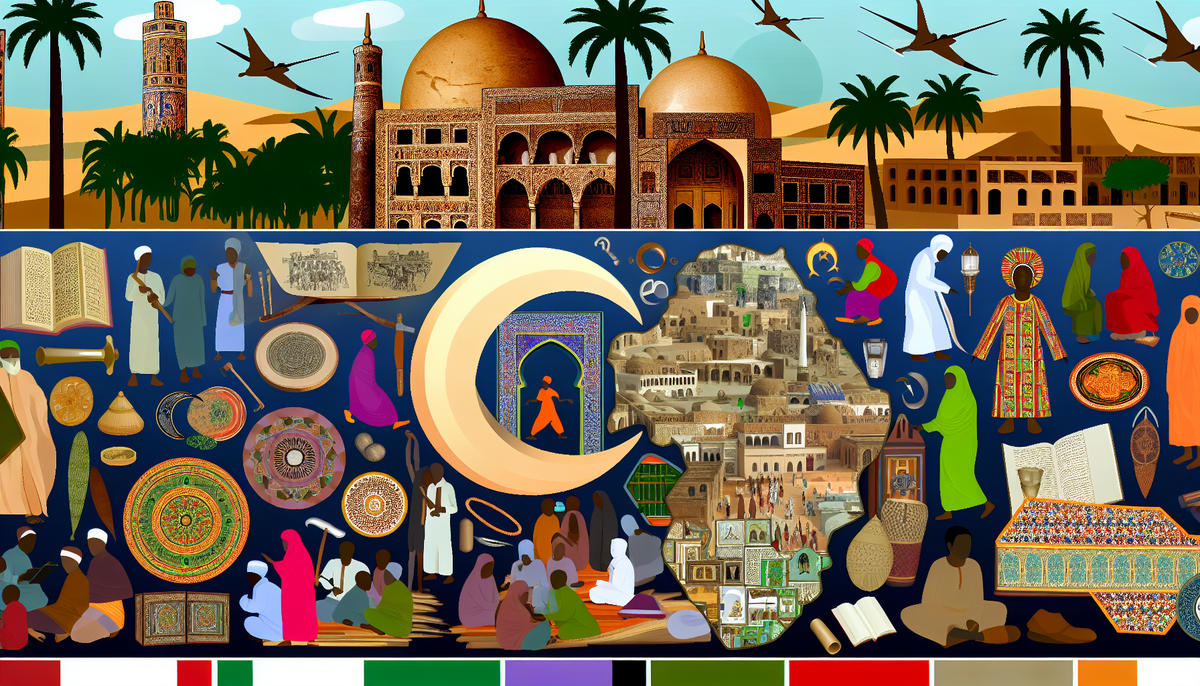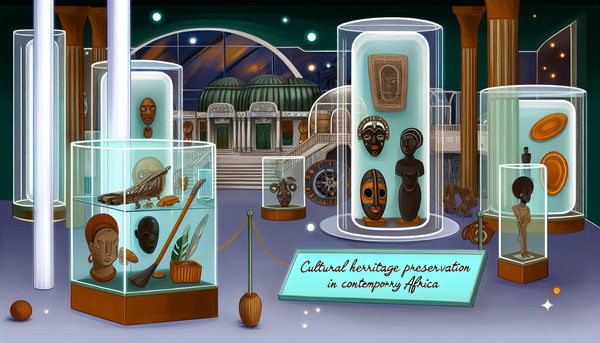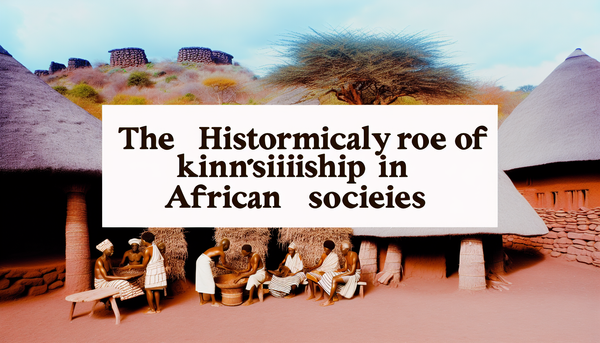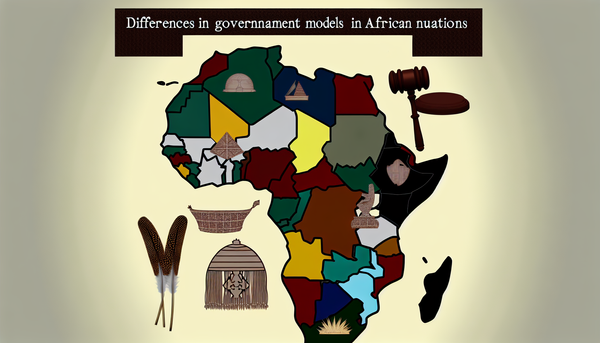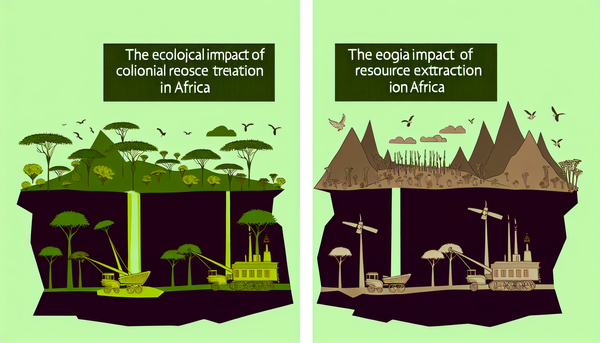### Introduction to Islam’s Entry into Africa
Islam's entry into Africa dates back to the 7th century, shortly after the religion was founded in the Arabian Peninsula. The initial expansion was facilitated by trade routes that connected the Middle East to the African continent. Arab traders and missionaries traveled extensively along these routes, bringing not only goods but also their religious beliefs. The coastal regions of North Africa, particularly present-day Morocco, Algeria, and Tunisia, were among the first areas to experience the influence of Islam.
Following the spread along trade networks, the religion established deeper roots through various means, including conquest and diplomacy. The Umayyad and Abbasid Caliphates played significant roles in expanding Islam’s reach through military campaigns and the establishment of administrative structures. A key aspect of Islam's appeal was its compatibility with existing African cultures, allowing for the coexistence of traditional beliefs and practices alongside Islamic teachings.
The most notable early centers of Islamic learning and culture emerged in cities like Cairo and Timbuktu. These cities became hubs for intellectual, cultural, and spiritual exchange, making profound contributions to Africa’s historical landscape. Understanding this early stage of Islam in Africa is crucial to grasping the continent's complex religious and cultural tapestry today.
### Spread of Islam throughout North Africa
The spread of Islam throughout North Africa was a swift and transformative process that began in the 7th century. Following the death of the Prophet Muhammad in 632 CE, Arab armies swiftly advanced across the region, reaching Libya, Egypt, and eventually the Maghreb. This expansion was driven largely by the Umayyad Caliphate, which aimed to consolidate its power and spread the Islamic faith.
Within a few decades, Egypt was incorporated into the Islamic world, largely influenced by the conquest of Alexandria in 642 CE. The region’s conversion to Islam was further accelerated by the appeal of its teachings, the establishment of trade networks, and the administrative efficiencies introduced by Muslim rulers. This era also marked the introduction of Arabic as the lingua franca, enhancing cultural and economic exchanges.
Trade routes connecting North Africa to other regions, including sub-Saharan Africa and Europe, facilitated the spread of Islamic culture, philosophy, and scientific knowledge. Furthermore, local populations often embraced Islam as a means of political and economic advancement. By the 8th century, the Maghreb had solidified as a central part of the Islamic world, setting the stage for later developments in the region's history and society.
### Islamic Empires in West Africa
The emergence of Islamic empires in West Africa marked a significant chapter in the region's history, beginning around the 8th century with the establishment of influential kingdoms such as the Ghana Empire. Although initially a trading power, Ghana's conversion to Islam set in motion a series of transformations that would see Islamic culture and governance embedded in the local society.
The Mali Empire (c. 1235–1600) became the most renowned Islamic state in West Africa, especially under the reign of Mansa Musa, who is often celebrated for his pilgrimage to Mecca in 1324. Mansa Musa's journey not only demonstrated the wealth of the empire but also facilitated cultural exchanges, leading to the influx of scholars, architects, and craftsmen from the Islamic world. The establishment of cities like Timbuktu and Gao turned these regions into renowned centers of learning and trade, enriching both African and Islamic heritage.
Subsequent empires, including the Songhai Empire, continued to build on this foundational Islamic influence, promoting scholarship, commerce, and Islamic jurisprudence. The empires fostered a unique blend of indigenous traditions and Islamic practices, contributing to the diverse cultural landscape of West Africa that persists to this day.
### Cultural Exchanges and the Islamic Influence
The arrival of Islam in Africa initiated profound cultural exchanges that reshaped societies across the continent. As Muslim traders and scholars interacted with local communities, they introduced not just the Islamic faith but also associated customs, art, and architectural styles. This fusion created a dynamic cultural landscape where Islamic elements blended seamlessly with existing African traditions.
One of the most noticeable influences was in architecture. The introduction of mosques featuring intricate geometric designs and minarets became prominent in cities such as Timbuktu and Djenne, showcasing innovative building techniques that emphasized community and spirituality. In addition, calligraphy and decorative arts flourished under Islamic patronage, leading to the development of unique artistic expressions that harmonized Islamic motifs with local aesthetics.
Language also played a crucial role in cultural exchanges. Arabic emerged as a scholarly and liturgical language, fostering a new literary tradition in which local languages incorporated Arabic vocabulary and script. Furthermore, the establishment of educational institutions, like the University of Sankore, promoted intellectual exchanges that enhanced the study of religion, astronomy, and mathematics.
These interactions not only enriched the cultural fabric of Africa but also contributed to the gradual development of a cohesive identity that combined Islamic and indigenous elements, fostering a legacy that endures to this day.
### Economic Impacts of Islam in African Regions
The introduction of Islam in Africa significantly influenced economic structures and practices, particularly through the establishment of extensive trade networks. Muslim traders played a vital role in connecting Africa to global markets, facilitating the exchange of goods like gold, salt, textiles, and ivory. This not only enhanced local economies but also positioned West Africa as a key player in international trade.
The rise of powerful Islamic empires, such as Mali and Songhai, further consolidated economic strength through centralized taxation and trade regulation. These empires developed sophisticated systems of commerce, contributing to urbanization as cities like Timbuktu and Gao became bustling trade hubs. The wealth generated from trade allowed these empires to invest in infrastructure, education, and the arts, leading to cultural and economic prosperity.
Islam also introduced new agricultural techniques and practices, enhancing food production in many regions. The concept of land ownership evolved under Islamic law, allowing for more formalized agricultural practices and the rise of market economies.
Additionally, the spread of Islamic banking principles, such as profit-sharing and interest-free loans, helped to create financial systems that promoted entrepreneurship. Overall, the economic impacts of Islam in Africa were profound, fostering interconnectedness and laying the groundwork for future economic developments across the continent.
### Educational and Religious Contributions
The arrival of Islam in Africa not only transformed religious landscapes but also significantly advanced educational practices and institutions. One of the most notable contributions was the establishment of centers of learning, particularly in regions like West Africa. Cities such as Timbuktu became renowned for their universities and libraries, attracting scholars from various parts of the Islamic world. Educational institutions, like the University of Sankore, emerged as vital centers for the study of Islamic theology, law, mathematics, science, and literature.
Islam's emphasis on literacy and knowledge encouraged the development of written scholarship. Arabic, as the language of the Quran and Islamic scholarship, became prevalent, leading to the translation of many texts into local languages and fostering multilingualism. This intellectual exchange enriched local cultures and provided a framework for integrating Islamic teachings with indigenous knowledge systems.
Religiously, the spread of Islam provided a unifying force across diverse ethnic groups, promoting social cohesion through common beliefs and practices. Festivals, communal prayers, and religious instruction became integral to community life, promoting values of charity, justice, and moral conduct. Overall, the educational and religious contributions of Islam laid a foundation for intellectual growth and social solidarity in various African regions that continue to resonate today.
### Contemporary Reflections on Islamic Legacy
The legacy of Islam in Africa continues to influence contemporary society in manifold ways, shaping cultural, social, and political dynamics. In many regions, Islamic teachings and values still govern everyday life, promoting community-focused living and ethical behavior. The rich history of Islamic scholarship has laid the groundwork for ongoing educational pursuits, with many universities still celebrating the traditions of learning established in the medieval period.
Culturally, the blend of Islamic and indigenous artistic expressions is evident in music, literature, and visual arts. Contemporary artists often draw on historical Islamic motifs while embedding them in narratives that resonate with current societal issues, fostering a unique cultural dialogue.
Politically, the organizational structures and governance models derived from Islamic principles continue to inform modern statecraft in various African countries. While the political landscape remains complex, the call for justice, equity, and community welfare echoes the foundational teachings of Islam.
However, this legacy is not without challenges. Contemporary issues such as radicalism, sectarianism, and misrepresentation of Islamic teachings pose significant hurdles. Addressing these challenges calls for a renewed engagement with the core values of peace and coexistence that Islam promotes. Thus, the Islamic legacy in Africa remains a dynamic force, crucial for navigating the complexities of modern life.
